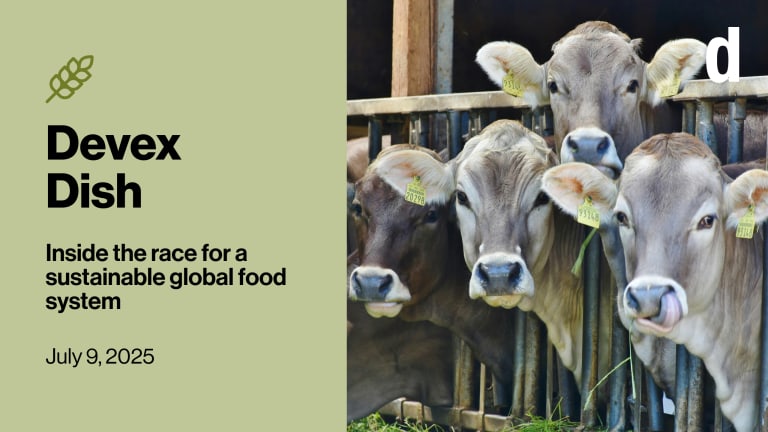
The unprecedented spread of monkeypox, following the COVID-19 pandemic, underscores how ill-prepared the world continues to be for emerging microbial threats. It seems we just can’t learn the global health security lessons these outbreaks try to teach us. Yet there are some very tangible steps we can take to predict the next pandemic.
To date, tens of thousands of monkeypox cases have been identified across the globe, notably in countries where the virus had not been seen before. In response, the World Health Organization declared the monkeypox outbreak a public health emergency of international concern on July 23.
Global health security has been improved in the last decade via the International Health Regulations and the Global Health Security Agenda. But COVID-19 has shown that these and other existing capacities, processes, and institutional arrangements are insufficient to protect the world from future viral threats. For example, our failure to effectively track and contain monkeypox is particularly striking given we now are three years into the COVID-19 pandemic.
Track viral threats
Meteorologists long have had a global surveillance system with a network of satellite images and remote sensors, which enable the forecasting of emerging weather threats. This ability to forecast hurricanes and droughts save lives.
We need a similar forecasting capability for emerging infectious diseases. But no such system exists for infectious viruses — including Ebola, Marburg, monkeypox, and the coronaviruses. Instead, we only have ad hoc programs that are unable to spot dangerous new viruses, mutations in known dangerous viruses, and the spread of both between animals and humans and across borders.
For example, we’ve known about and studied the monkeypox virus since 1970. But we’re only now learning that monkeypox might have been spreading outside of Africa — and steadily mutating — for several years. There is strong reason to believe that, by the end of this monkeypox outbreak, the virus will no longer be localized to Central and West Africa, but will constitute an endemic threat to most of the world.
How was this possible?
Breaking the feast-and-famine response cycle
The COVID-19 pandemic should have triggered the creation of a global early warning surveillance system to quickly identify disease threats — both known, such as monkeypox, and previously unknown, such as severe acute respiratory syndrome, or SARS, was in 2002. We should be monitoring known hot spots for viral spillover from animals to humans, including Africa and China.
Instead, for approximately the last 20 years, we have operated on a feast-and-famine cycle regarding outbreaks. At first, these events receive an enormous amount of attention and funding. But once the threat dissipates, we fall back into complacency. The political commitment and voter interest wanes, and we fail to prepare for the next emerging threat until it’s at our doorsteps — or inside our houses.
The limited ad hoc surveillance systems we have today prioritize monitoring viruses in humans instead of where they begin — animals. Human health and animal health professionals do not often interact, and the lack of interoperable data systems undermine their ability to work toward a common goal.
And we have done a poor job ensuring equitable access to vaccines for new viral threats. COVID-19 vaccines, for example, followed the available money instead of where the need was most acute. We are seeing the same pattern now with monkeypox vaccines.
A ‘One Health’ approach
During the remainder of this century, the frequency of epidemics and pandemics likely will increase, driven to a large extent by demographic trends, including urbanization, environmental degradation, climate change, persistent social and economic inequalities, and globalized trade and travel.
The world urgently needs a global commitment to comprehensive, long-term surveillance across wildlife, livestock, and human populations of critical biological, epidemiologic, and ecological changes in viruses which pose an elevated risk to human and animal health. Such a surveillance system would be inherently One Health in scope, meaning a collaborative, multisectoral, transdisciplinary approach spanning the wildlife-livestock-human ecosystems.
This type of system would allow us to get ahead of — and hopefully prevent — the next viral outbreak. It would improve our understanding of how viruses are changing and spreading around the globe, further helping us identify and monitor infectious disease hot spots.
We were surprised by the SARS outbreak in 2003, a previously unknown coronavirus which sickened more than 8,000 people between November 2002 and July 2003. More than 770 people died before the outbreak was contained.
We were caught off guard by Ebola’s spread to West Africa in early 2014 from its historic presence in Central Africa. By March 2016, there had been more than 28,600 cases and 11,325 deaths from the disease.
The combined versions of COVID-19 have, so far, sickened more than 596 million people and resulted in over 6.4 million deaths globally.
Will monkeypox finally trigger us to take the actions needed to create the kinds of global systems and capacities that will enable us to be aware of dangerous viruses before they appear in a significant number of people? Or will we continue to wait blindly until another viral hurricane reaches our visible horizons, threatening everyone in its path?









